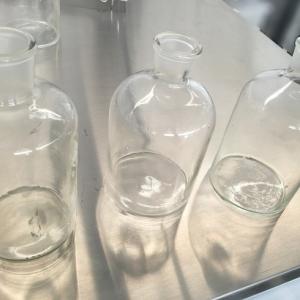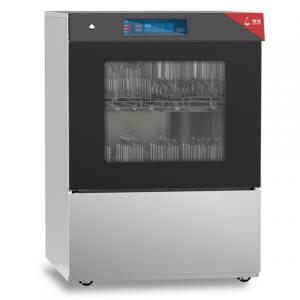The difference between Acid steam cleaning system and Laboratory glassware washer
There are significant differences between Acid steam cleaning system and Laboratory glassware washer in multiple aspects, mainly reflected in their working principles, scope of application, cleaning effects, and material requirements.1、 Working principle
Acid steam cleaning system: mainly uses nitric acid vapor to come into contact with the surface of the vessel and condense reflux. Through this process, the metal ions on the surface of the vessel are dissolved and carried away, making it particularly suitable for cleaning vessels such as digestion tubes used in trace analysis of inorganic elements.
Laboratory glassware washer: mainly based on mechanical force, the water pump flushes the heated hot water through the nozzle and spray arm to the inner and outer surfaces of the container. In addition, a special acid-base cleaning agent is added, and under the drive of the cleaning circulation pump, 360 degree direct flushing is carried out. During this process, mechanical and chemical forces work together to effectively remove residual pollutants from glassware.
2、 Scope of application
Acid steam cleaning system: Especially suitable for inorganic experiments, for vessels that require high cleanliness requirements, such as dissolution tanks, volumetric flasks, triangular flasks, etc. made of glass, quartz, PFA, PTFE, TFM and other materials, it can effectively reduce the ion background of the vessels. The inner cavity is made of tetrafluoroethylene material, without metal precipitation, ensuring that the cleaning results meet the requirements of trace analysis such as AAS, AFS, ICP-MS. However, it is not suitable for vessel cleaning in conventional physical and chemical experiments because nitric acid vapor fumigation is used throughout the cleaning process without using any cleaning agents, which may not completely remove the chemical substances that may remain on the vessels in physical and chemical experiments.
Laboratory glassware washer: With a wider range of applications, it can be used to clean various laboratory glassware, including test tubes, beakers, conical bottles, etc. By using high-pressure spraying and rotating water flow, combined with appropriate cleaning agents and temperature control, various stains such as oil, protein, and inorganic salts can be thoroughly removed.
3、 Cleaning effect
Acid steam cleaning system: Due to its unique cleaning principle, it has excellent cleaning effect on inorganic experimental vessels, which can significantly reduce the residual metal ions on the surface of the vessels and achieve a cleanliness level of PPT.
Laboratory glassware washer: Although it can also achieve a certain cleaning effect, it may not be able to completely remove inorganic element residues like acid reflux cleaning machine, because the bottle washing machine is a metal structure, and the inner cavity is generally made of 316 or 304 stainless steel material. There may be trace metal precipitation during the cleaning process, which may not be suitable for some high demand inorganic experiments.
In summary, there are significant differences between acid reflux cleaning machines and laboratory bottle washing machines in terms of working principle, scope of application, cleaning effect, and material requirements. When choosing which equipment to use, it is necessary to consider comprehensively based on specific experimental requirements and vessel types.
Related News
 English
English Chinese
Chinese




